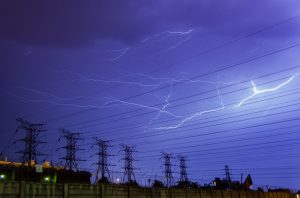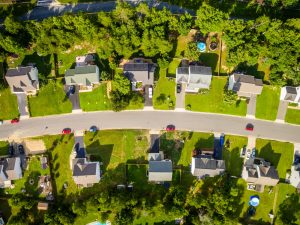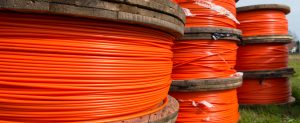
Some people work long shifts. Others are students who have been processing information in class for 7 to 8 hours. At the end of the day, a lot of people want to go home, put on comfortable clothes, and enjoy a show on Netflix. Maybe browse through social media on their phone, play a game on their computer or gaming console. If you fit into one of these categories, you’re probably doing all these things with an internet connection. However, your moments of relaxation are powered by busy cable lines filled with fiber optic lines (or copper), trafficking a lot of information all over the world. Let’s breakdown 5 of the many things that you probably didn’t know about fiber-optic internet.
- Fiber is thinner than other wires, and faster

Optical fibers are known to being be extremely thin and smaller than any other type of metal wiring, allowing data to be sent greater distances while maintaining high speeds. This is also because they send pulses of light instead of electricity, so information moves faster. Here at Craw-Kan, we offer 1000 MBPS download and upload speeds all because of our fiber-optic lines.
- We keep our fiber lines safe underground

When we expand into a new area, we must put our fiber-optic lines underground. That’s one reason you see a lot of construction and installation crews in our service area because we dig-up some of the earth to run the lines underground. However, before the fiber is even installed, crews run conduit piping underground. The fiber is then put into the conduit pipes. So not only is fiber more reliable and safe from outages since it is underground, fiber is sending light signals and not electrical signals, so it’s more weather resistant in that regard as well because lightning and heavy rains don’t play as large of a role.
- The struggle with getting fiber lines to everyone

Our number one question we receive is, “When are you going to get fiber lines in my neighborhood?” We want to serve everyone. That is our overall goal. The two big issues are man-power and interest. We have a lot of installers working hard to expand to new townships and more counties, but installing fiber takes time. We also have third-party contractors who help with the construction of these lines, so we communicate the best route to have the most successful method of completing those lines and drop points. There are a lot of areas in Kansas, Oklahoma, and Missouri that we are planning to grow, and if you give us time, we will be growing more and more, hopefully into your neighborhood.
We also need to see if there is curiosity of people wanting our service. If enough people in a given area show interest, we will extend to that region. One way to measure this is by filling out this form. If you are not in our current service area, but there seems to be enough interest from people in that given location, we can track that, and it tells us that we need to grow into that territory.
- Copper Vs Fiber

The signals sent through copper-wiring degrade relatively quickly. To maintain a good signal in terms of quality, fiber is the way to go. If you are dealing with a poor internet connection, it’s likely you are on a copper network. Signals sent through optical fiber do not degrade as quickly compared to those sent through a copper one, resulting in higher bandwidth. Data can be sent over greater distances than copper, the more efficient the transmission, meaning less buffering when watching Netflix.
- Security

In a time of increased awareness towards cyber security, fiber-optic internet is praised as a cost-effective way of instantly increasing your Internet security. Intercepting copper cable can be performed by criminals through means of connecting taps to a line to pick-up the electronic signals. Putting a tap on a fiber-optic line to intercept data transmissions is incredibly difficult. It’s also easy to identify compromised fiber cables because they visibly emit light from transmissions. So, if safety is a concern for you, fiber is the way to go!
